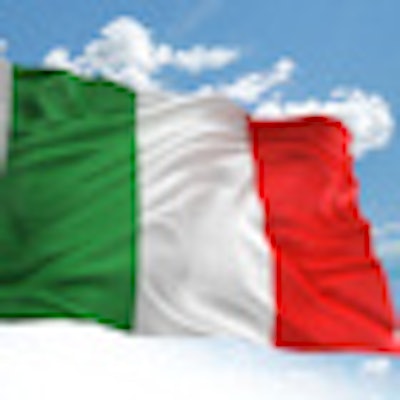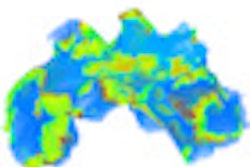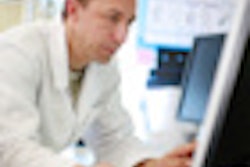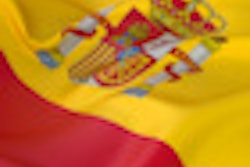
A telecardiology service for a region in southwestern Italy with more than 4 million residents is directing patients needing cardiovascular emergency care faster to hospitals. It's also keeping individuals who are experiencing "false alarms" out of hospitals and contributing to better resource utilization of emergency healthcare.
The service provides on-the-spot electrocardiograms (ECGs) performed by 118 public emergency healthcare responders to residents of Apulia. (118 is the telephone number to call in Italy to summon a paramedic emergency team.) The service has been in operation in this heel of the "boot" region of Italy since 2004 and is approaching its 425,00th examination milestone. The telecardiology service was the subject of a poster presentation at the 2012 European Society of Cardiology (ESC) annual congress in Munich, Germany.
 Dr. Natale Daniele Brunetti.
Dr. Natale Daniele Brunetti."Telecardiology is ready for prime time in cardiovascular emergencies. The Apulia prehospital ECG network provides an interesting model and example of the potential of telemedicine in healthcare management. It combines high-quality medical assistance to residents of both urban and rural areas at an optimal healthcare expense of public resources," said lead author and presenter Dr. Natale Daniele Brunetti, PhD, an assistant professor of cardiology at the University of Foggia.
The telecardiology service began as a pilot project in October 2004, supported in part by a grant from Pfizer. Its objective was to assess the feasibility and reliability of telecardiology technologies, specifically to get treatment for patients with cardiovascular emergencies faster and to see if telemedicine protocols would help lower the number of improper hospitalizations.
About 154 crews of 118 emergency medical service (EMS) responders were equipped with special devices for recording and telephone transmission of 12-lead ECG (Cardio Vox P12 heart-line receiving system, Aerotel, Holon, Israel). Because the device does not directly show ECG records, results cannot be immediately seen by paramedics and physicians who comprise the crews.
Data recorded are transmitted by mobile phone to a single regional telecardiology hub center. After rapidly completing a patient identification form that includes a unique patient identifier, the recipient cardiologist interprets the ECG and briefs the on-scene EMS team and the EMS district center. If the cardiologist wants the on-scene paramedics or physicians to see the ECG results, they can be sent back for display on a smartphone.
The telecardiology support and hub center facilities are operated by Cardio-on-Line Europe, a certified telemedicine company. There are about 20 cardiologists who provide their services for 24/7 support. The hub utilizes about 25 incoming telephone lines, supported by a large staff of call center operators. It is equipped with an emergency power system in case of electrical power outage to keep computer terminals and telephones running.
All center services and the entire network are protected by a combination of hardware and software firewalls, as well as robust antivirus software, Brunetti said. A comprehensive network management program keeps all security-related systems updated in real-time.
Prior to the launch of the service, the regional EMS district office and the telecardiology hub agreed upon the indications that merited an ECG exam. These included presence of chest pain or epigastric pain, breathlessness, palpitations, dizziness, and fainting, or if a patient was suspected of having acute cardiovascular disease.
 The telecardiology service has been operating in the heel of the "boot" of Italy since 2004.
The telecardiology service has been operating in the heel of the "boot" of Italy since 2004.If the ECG results indicate that emergency department treatment and hospitalization are needed, the interpreting cardiologist briefs the onsite team and notifies the appropriate EMS district center (there are five). The EMS team then transports the patient to the designated hospital, whose emergency department is alerted to expect the patient and who can talk with the telecardiologist if necessary prior to the patient's arrival.
If the ECG results are normal, the patient is released without hospitalization. During an initial study of 27,841 patients who used the telecardiology service between October 2004 and March 2006, this represented about 65%. Of the remainder, about 10% showed signs of supraventricular tachycardia and 25% of atrial fibrillation, which required hospital care.
Findings reported in the poster presentation at the ESC congress revealed that with a larger population group -- specifically 422,633 patients -- the percentage of patients needing hospital care is even lower. Brunetti said that 7.2% of the cases showed a significant arrhythmia and 5.6% had signs suggestive of formyocardial ischemia.
"The telecardiology service is now considered useful and trustworthy. It is frequently requested in everyday EMS practice. This increase in use is shown by the steady increase in the number of exams performed. During 2005, there were 15,534 ECGs. This nearly doubled to 31,535 in 2006. The 50,000 exam mark was reached in 2008. In just three years, the number of exams performed doubled again, to 106,870," he noted.
"This service is an interesting example of synergy between public health authorities and private enterprise. Private enterprise includes other entities than Cardio-on-Line Europe. It includes private patients, pharmacies, general practitioners, specialists in occupational medicine, and nursing homes," Brunetti said.
The yearly cost for the telecardiology service provided to Apulia is 1.2 million euros ($1.6 million U.S.) plus the VAT, regardless of the number of ECG exams performed. This expense includes all necessary emergency personnel training and 24/7 technical assistance.
A complete cost analysis has not yet been performed. "There is evidence that the number of missed or wrong diagnoses is significantly reduced, and this clearly represents cost savings. The time to diagnosis is compliant with international benchmarks when prehospital ECG by telecardiology is implemented, and this represents prudent utilization of the region's healthcare resources," he commented.
Additionally, a considerable number of patients complaining of symptoms suggesting heart disease would probably be sent for a cardiologist examination or hospitalized if they had not been screened with telecardiology diagnostics. That is much more expensive than an onsite ECG exam interpreted by a central cardiology service. While there may be a tendency of EMS staff to overrate the risk of heart disease in patients complaining of symptoms such as chest pain or breathlessness, this "overuse" of telecardiology support is justified by the very low specificity of symptoms commonly related to heart disease.
Could cost reductions be extended even more? The answer is yes. A single hub has the potential to support at least one other region also inhabited by millions of residents.



















